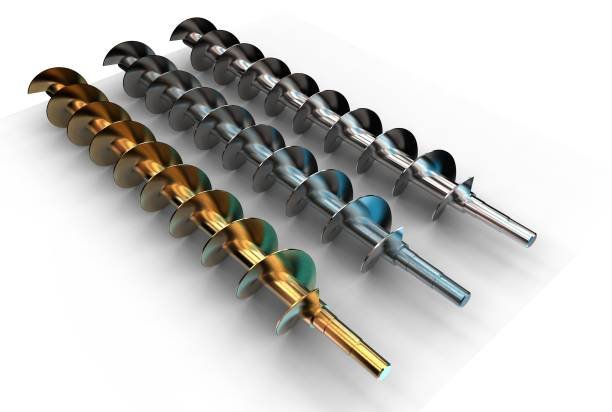Auger Flight Types

Augers and auger flighting may be made to order to meet the specific requirements of a given application. As a result, there is no reason not to choose the flight auger that is most appropriate for your particular scenario. But, what are your alternatives? Read on to discover more about the numerous sorts that are available on the industry. After you've done your homework, you should speak with this reputable auger flighting suppliers about your exact specs, requirements, and equipment.
Helicoid Flight, This auger flight with a futuristic appearance is helix shaped and constructed from a single piece of metal. It may be made out of a square, rectangular, or circular bar, depending on your preference. It is commonly made of carbon steel or stainless steel, depending on the use. Helicoid flights may be used for a variety of purposes, both heavy-duty and light-duty. A light-duty helicoid is sufficient for transporting lightweight, non-abrasive materials such as pellets or grain. Heavy-duty helicoid flighting is required for abrasive and/or bulky materials such as fertilizer, limestone, and cement.
Sectional Flight - Sectional auger flights are also helix shaped, but they vary from helicoid flights in that they are created from a helblanks cut from flat plate rather than helicoid blanks cut from flat plate. As a result, when would you choose to employ a sectional over a helicoid? Typically, the size of the object is the deciding factor. When using sectional flighting, you may get a bigger height or web of the flight. In a word, sectional flights allow for a greater variety of seating configurations. Sectional auger flights are more expensive, but they are particularly well suited to abrasive applications and applications that need exceptional durability. Glass cullet and alumina are two examples of such materials.
Ribbon Flighting. Similar to helicoid flighting, ribbon flighting is created by forming a continuous helix of bar. It is often characterized by a small web and a big ID. As a result, what makes this trip distinct from the aforementioned auger flights? One of the characteristics that distinguishes this style of flight from the other flighting types is the huge diameter of the wings. Handling sticky materials or dry materials that need to be blended are two examples of typical uses.
Shaftless Flight. The difference between shaftless auger flights and conventional auger flights is the gauge. This sort of flighting is comparable to the ribbon flight in that it is particularly effective when transporting sticky items from one location to another. Shaftless flights are also capable of moving huge boulders with ease. The absence of intermediate bearings and the absence of a central pipe provide various benefits over the other auger flight types, including fewer maintenance costs, longer life, and improved screw capacity. Heavy-duty applications such as construction, mining, and water treatment are just a few of the sectors that benefit from the shaftless auger flights.
Complete Screws. Complete screw weldments or augers are made by attaching a helical or sectional flight to a shaft, pipe, flange, hub, post, or other means of turning the screw. The size, shape, and function of complete screw weldments or augers may vary greatly. Depending on the application, they may be anything from a basic pipe with bushed and drilled ends to a long tapered solid shaft with a carefully machined drive connection. Complete screws may be tailored to meet particular requirements such as tapering outside diameters, tapering inside diameters, machined drive ends, hardsurfacing, stitch or solid weld, and more.
